Final Report On the Model WHS Laws
The final report on the Model Work Health and Safety Laws review, by Marie Boland, former Executive Director of SafeWork SA, was released in December 2018. Reassuringly the review found that “the model WHS laws are, for the most part, working as intended”. However, it also went further into the detail of the regulations, uncovering dissatisfaction with specific provisions and making 34 recommendations which, if implemented, could significantly affect the substance of the current laws and their enforcement.
Key Points
Here are some key points (briefly summarised):
- The Victorian and Western Australian Governments are being urged to adopt the model WHS laws to minimise variations
- Psychological health is neglected in the model WHS Regulations and model Codes and requires additional regulation. This is likely to cause some interest as to the definition and extent of psychological injury attributable to work and practicable preventative measures
- Many PCBUs find the principles applying to duties difficult to apply in practice i.e. multiple persons can have a duty and the duty of to consult, co-operate and co-ordinate. A particular concern of small business
- The incident notification provisions are inadequate, not working as intended, fail to provide a notification trigger for psychological injuries, generate confusion and do not adequately capture the initial intent of the laws
- The regulatory requirements for Safe Work Method Statements (SWMS) for high-risk construction work are misunderstood and not operating as intended. Interesting that this is recommended as an inclusion in regulation not a code where this detail would normally sit
- Confidence in the White Card is diminishing, with concerns about training, poor assessment practices and the identity of the card holder
- Gaps in the regulation of asbestos identification and removal
Recommendations
Some recommendations (briefly summarised):
- Develop a model Code with practical guidance for PCBUs on meeting the model WHS Act principles and their duty to consult, etc. including practical examples e.g. labour hire, outsourcing, franchising
- Provide a notification trigger for psychological injuries; capture incidents associated with new work practices, industries and work arrangements
- Amend the Regulations to deal with identifying and controlling psychosocial risks and injury
- Move the hierarchy of control measures requirements from the model WHS Regulations to the model WHS Act to help address existing confusion and uncertainty (e.g. with small business)
- Add a SWMS template to the model WHS Regulations and develop a tool to assist people complete fit-for-purpose SWMS
- Add photographic ID to the White Cards consistent with high-risk work licences
- Adjust penalties to reflect CPI increases, implement penalty review, include a new offence of industrial manslaughter and amend the WHS Act so that a duty holder who is grossly negligent in exposing an individual to a risk of serious harm or death commits a Category 1 offence
- Amend the model WHS Act to provide for a new offence of industrial manslaughter
- Prohibit insurance for WHS fines
- Consider removing references to Standards in model WHS Regulations
- Improving the quality of asbestos registers
- Require that asbestos registers are created by a competent person and update the model Codes to provide more information on the development of asbestos registers
- Review existing requirements for competent persons, including consideration of amendments to the model WHS Regulations to provide specific competencies for asbestos-related tasks or requirements for further guidance on the skills and experience required for all asbestos-related tasks







